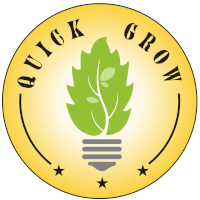
The history of artificial light plant cultivation is closely linked to the innovation of electric light sources and the progress of human understanding of plant photobiology. Since the 1980s, the rapid development of LED semiconductor light source technology has provided the tools for research in photobiology and fuelled the development of ED as an artificial light source for plant cultivation. Currently, as the highest form of facility horticulture, plant factories with LED light sources that implement intelligent control of high-precision environments based on the characteristics of plant biology requirements are rapidly developing.
Intelligent plant plant operations require not only the automation of environmental factors, water and fertiliser supply and deployment control, but also the automation of production processes such as seedling raising, transplanting and harvesting, reducing the disturbance and pollution of the production space by human activity. The intelligent management and control of plant plant operations and production requires electrical energy. The energy consumption of artificial light plants consists of light sources, air conditioning, pumping systems, pneumatic systems, detection and control systems, etc.
In terms of artificial light plant factories, the largest energy consumption is the light system, accounting for more than 60% of the total energy consumption; followed by the air conditioning system, accounting for more than 30%, and the rest of the control system consumes relatively little energy. At present, the cost of operating energy consumption has become the main component of the operating costs of plant factories, and is an important reason for the high operating costs of plant factories. Therefore, reducing the energy consumption of the lighting system has become the main way to save energy and increase efficiency in plant factories.
The core of plant factory production is the rapid growth of plants in accordance with human food needs and the acquisition of high-quality agricultural products. Therefore, all environmental factors, nutritional factors and management elements that have a bearing on plant health and productivity need to be controlled. Light, as the only source of environmental signals and energy for photosynthesis, is an essential environmental factor for the growth and development of plants and the formation of yield quality in facilities.
In nature, sunlight varies with geographical latitude, season and weather conditions. In high latitudes and most other regions, the lack of light time, light intensity and light quality is serious due to continuous cloudy days, rain, snow, fog and haze, as well as atmospheric pollution and floating dust, which seriously affects the growth and development of crops, especially horticultural crops and high quality and efficient production.
At the same time, the light environment (light intensity, light quality and light cycle) in facilities such as solar greenhouses and plastic greenhouses cannot meet the needs of the growth and development of facility crops and the formation of yield and quality due to insufficient light hours in high latitudes and low light due to rainy weather in low latitudes, which limits the production potential of facility horticulture. In addition, the scale of artificial light cultivation has increased significantly. It is clear that suitable artificial light environment regulation has an indispensable role in the production of high quality, high yielding, ecological and safe facility horticulture.
Only by setting up artificial light environments and management strategies according to the photobiological needs of facility plants, and by carrying out dynamic and intelligent management, can facility horticulture be completely freed from the constraints of natural conditions and be artificially controlled. At the same time, traditional artificial light sources have a fixed spectral energy distribution and cannot be controlled by apoptosis; they can only control light intensity and photoperiod, with a small proportion of effective photosynthetic radiation and more ineffective thermal radiation.
The demand for artificial lighting in facility agriculture is increasing year by year, and artificial light supplementation and precise regulation of the light environment have become an important technology in determining the quality of production and production efficiency in facility agriculture. For a long time, light environment control has also been a production shortcoming due to the poor overall environmental control performance of facility horticulture. In addition, plant photobiology, especially the laws of plant photoplasm biology, is not clear, and the inability to develop energy-efficient and efficient light environment regulation strategies has also hindered the development of agricultural lighting. Finally, traditional electric light sources are poorly controllable and unable to regulate light quality, light intensity and photoperiod according to the needs of plants, making it difficult to meet the practice of agricultural lighting and the environmental concept of on-demand lighting. Agricultural lighting is characterised by many fields, complex biological principles and regulation indicators, strong lamp specialisation and precise control systems.
With the development of high-precision environment-controlled horticultural facilities in the form of plant factories, as well as the technological maturation and progress of the semiconductor light source LED provides an opportunity for artificial light environment control to gradually come into practice, providing light on demand, segmented management and intelligent control in accordance with the photobiological requirements of plants, maximising the biological benefits of light environment control and providing a new and effective means of coping with low light and low light stress, regulating plant growth and development and yield and quality formation. It provides a new and effective means of coping with low light stress, regulating plant growth and development and quality formation.
